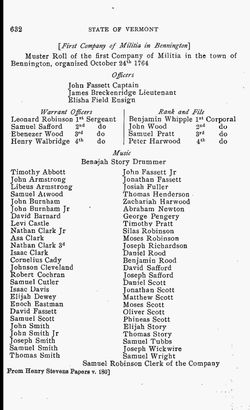On July 24, 1776, Jonathan, along with two other men represented Pittsford at a convention where Vermont decided that they could not consort with New York or New Hampshire. Jonathan was appointed one of the commissioners of sequenstration on November 28, 1777, working under a bill of the General Assembly which empowered the Governor to confiscate the personal property of Tories and to sell such and put the monies into the State Treasury.
Jonathan married Mary Montague on October 9, 1764 in Bennington. They had eleven children. The house that they lived in was built by Jonathan in 1774. It is attached to his old English barn and can still be seen.
On July 24, 1776, Jonathan, along with two other men represented Pittsford at a convention where Vermont decided that they could not consort with New York or New Hampshire. Jonathan was appointed one of the commissioners of sequenstration on November 28, 1777, working under a bill of the General Assembly which empowered the Governor to confiscate the personal property of Tories and to sell such and put the monies into the State Treasury.
Jonathan married Mary Montague on October 9, 1764 in Bennington. They had eleven children. The house that they lived in was built by Jonathan in 1774. It is attached to his old English barn and can still be seen.
Family Members
Advertisement
Advertisement















